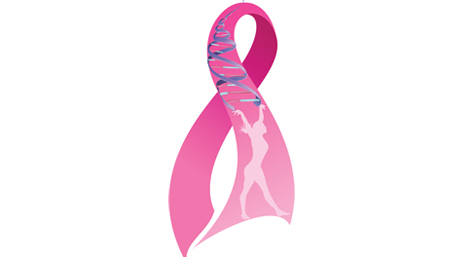European Journal of Human Genetics advance online publication 8 March 2017; doi: 10.1038/ejhg.2017.12
Prediction of years of life after diagnosis of breast cancer using omics and omic-by-treatment interactions
EJHGOpen
Agustín González-Reymúndez1,5, Gustavo de los Campos1,2,5, Lucía Gutiérrez3, Sophia Y Lunt4 and Ana I Vazquez1,5
- 1QuantGen Group, Department of Epidemiology and Biostatistics, Michigan State University, East Lansing, MI, USA
- 2Department of Statistics and Probability, Michigan State University, East Lansing, MI, USA
- 3Department of Agronomy, University of Wisconsin-Madison, Madison, WI, USA
- 4Department of Biochemistry and Molecular Biology, Michigan State University, East Lansing, MI, USA
Correspondence: Dr AI Vazquez, QuantGen Group, Department of Epidemiololgy and Biostatistics, Michigan State University, 909 Fee Road, B601 West Fee Hall, East Lansing, MI 48824, USA. Tel: +1 517 352 8623; Fax: +1 517 432 1130; E-mail: vazquez@msu.edu
5These authors contributed equally to this work.
Received 23 June 2016; Revised 25 December 2016; Accepted 11 January 2017
Advance online publication 8 March 2017
Advance online publication 8 March 2017
Top
Abstract
Breast cancer (BC) is the second most common type of cancer and a major cause of death for women. Commonly, BC patients are assigned to risk groups based on the combination of prognostic and prediction factors (eg, patient age, tumor size, tumor grade, hormone receptor status, etc). Although this approach is able to identify risk groups with different prognosis, patients are highly heterogeneous in their response to treatments. To improve the prediction of BC patients, we extended clinical models (including prognostic and prediction factors with whole-omic data) to integrate omics profiles for gene expression and copy number variants (CNVs). We describe a modeling framework that is able to incorporate clinical risk factors, high-dimensional omics profiles, and interactions between omics and non-omic factors (eg, treatment). We used the proposed modeling framework and data from METABRIC (Molecular Taxonomy of Breast Cancer Consortium) to assess the impact on the accuracy of BC patient survival predictions when omics and omic-by-treatment interactions are being considered. Our analysis shows that omics and omic-by-treatment interactions explain a sizable fraction of the variance on survival time that is not explained by commonly used clinical covariates. The sizable interaction effects observed, together with the increase in prediction accuracy, suggest that whole-omic profiles could be used to improve prognosis prediction among BC patients.


Last Posted: Mar 09, 2017
- Prediction of years of life after diagnosis of breast cancer using omics and omic-by-treatment interactions

Agustín González-Reymúndez et al, Eur J Human Genetics, March 8, 2017 - Clinical use of biomarkers in breast cancer: Updated guidelines from the European Group on Tumor Markers (EGTM).

Duffy M J et al. European journal of cancer (Oxford, England : 1990) 2017 Feb 75284-298 - Prediction of years of life after diagnosis of breast cancer using omics and omic-by-treatment interactions

Agustín González-Reymúndez et al, Eur J Human Genetics, March 8, 2017 - Using lessons from breast, cervical, and colorectal cancer screening to inform the development of lung cancer screening programs.

Armstrong Katrina et al. Cancer 2016 122(9) 1338-42 - [Genetic Counseling of HBOC and Japanese Organization of HBOC].

Fukushima Yoshimitsu et al. Gan to kagaku ryoho. Cancer & chemotherapy 2017 Feb 44(2) 107-110 - Breast cancer-specific survival in patients with lymph node-positive hormone receptor-positive invasive breast cancer and Oncotype DX Recurrence Score results in the SEER database.

Roberts Megan C et al. Breast cancer research and treatment 2017 Feb - Can an educational application increase risk perception accuracy amongst patients attending a high-risk breast cancer clinic?

Keohane D et al. Breast (Edinburgh, Scotland) 2017 Feb 32192-198 - Oncologist and organizational factors associated with variation in breast cancer multigene testing.

Lieu Tracy A et al. Breast cancer research and treatment 2017 Feb - Pedigree and BRCA gene analysis in breast cancer patients to identify hereditary breast and ovarian cancer syndrome to prevent morbidity and mortality of disease in Indian population.

Darooei Mina et al. Tumour biology : the journal of the International Society for Oncodevelopmental Biology and Medicine 2017 Feb 39(2) 1010428317694303 - Retrospective review of genomic testing in breast cancer: Does it improve outcome?

Gastelum Grady M et al. Breast cancer research and treatment 2017 Feb - Evaluating the performance of National Comprehensive Cancer Network (NCCN) breast and ovarian genetic/familial high risk assessment referral criteria for breast cancer women in an Asian surgical breast clinic.

Lim Geok-Hoon et al. Gland surgery 2017 Feb 6(1) 35-42 - Gene profiling should be offered to some patients with breast cancer, says NICE.

Wise Jacqui et al. BMJ (Clinical research ed.) 2016 Jun 353i3391 - Opportunities for improving triple-negative breast cancer outcomes: results of a population-based study.

Rapiti Elisabetta et al. Cancer medicine 2017 Feb - Quality of life among patients after bilateral prophylactic mastectomy: a systematic review of patient-reported outcomes.

Razdan Shantanu N et al. Quality of life research : an international journal of quality of life aspects of treatment, care and rehabilitation 2016 25(6) 1409-21 - Recruiting families at risk for hereditary breast and ovarian cancer from a statewide cancer registry: a methodological study.

Katapodi Maria C et al. Cancer causes & control : CCC 2017 Feb - The current use and attitudes towards tumor genome sequencing in breast cancer.

Gingras I et al. Scientific reports 2016 Mar 622517






















.png)











No hay comentarios:
Publicar un comentario